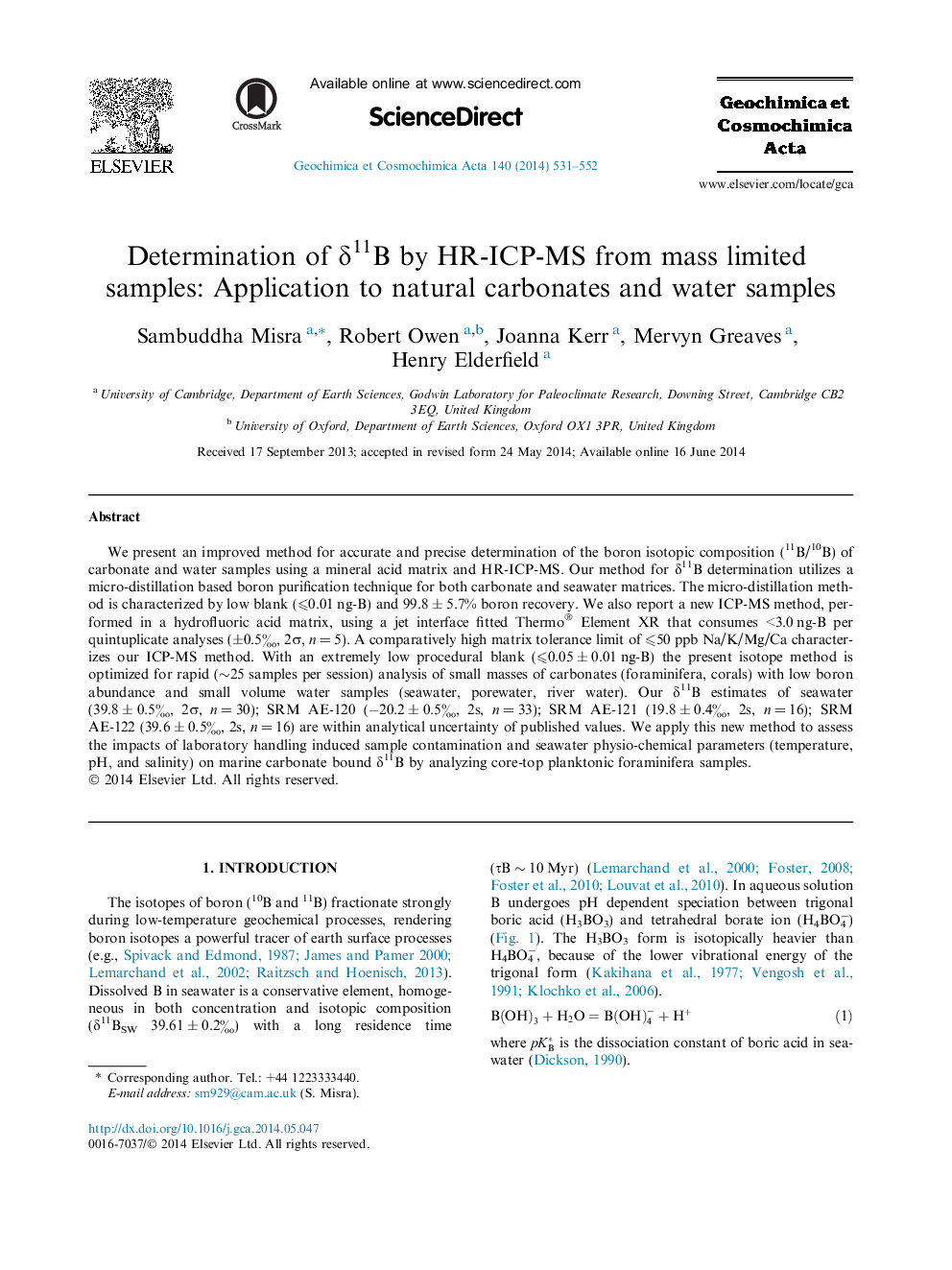| Article ID | Journal | Published Year | Pages | File Type |
|---|---|---|---|---|
| 6438398 | Geochimica et Cosmochimica Acta | 2014 | 22 Pages |
Abstract
We present an improved method for accurate and precise determination of the boron isotopic composition (11B/10B) of carbonate and water samples using a mineral acid matrix and HR-ICP-MS. Our method for δ11B determination utilizes a micro-distillation based boron purification technique for both carbonate and seawater matrices. The micro-distillation method is characterized by low blank (⩽0.01 ng-B) and 99.8 ± 5.7% boron recovery. We also report a new ICP-MS method, performed in a hydrofluoric acid matrix, using a jet interface fitted Thermo® Element XR that consumes <3.0 ng-B per quintuplicate analyses (±0.5â°, 2Ï, n = 5). A comparatively high matrix tolerance limit of ⩽50 ppb Na/K/Mg/Ca characterizes our ICP-MS method. With an extremely low procedural blank (⩽0.05 ± 0.01 ng-B) the present isotope method is optimized for rapid (â¼25 samples per session) analysis of small masses of carbonates (foraminifera, corals) with low boron abundance and small volume water samples (seawater, porewater, river water). Our δ11B estimates of seawater (39.8 ± 0.5â°, 2Ï, n = 30); SRM AE-120 (â20.2 ± 0.5â°, 2s, n = 33); SRM AE-121 (19.8 ± 0.4â°, 2s, n = 16); SRM AE-122 (39.6 ± 0.5â°, 2s, n = 16) are within analytical uncertainty of published values. We apply this new method to assess the impacts of laboratory handling induced sample contamination and seawater physio-chemical parameters (temperature, pH, and salinity) on marine carbonate bound δ11B by analyzing core-top planktonic foraminifera samples.
Related Topics
Physical Sciences and Engineering
Earth and Planetary Sciences
Geochemistry and Petrology
Authors
Sambuddha Misra, Robert Owen, Joanna Kerr, Mervyn Greaves, Henry Elderfield,
